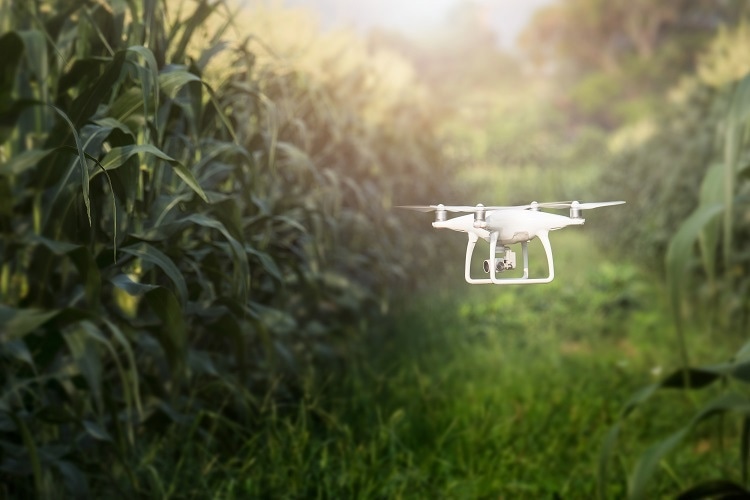On October 17, 2018, Canada became the second country in the world after Uruguay to legalize the possession and recreational use of Cannabis sativa L, commonly known as cannabis.

Image Credits: ThongsukAtiwannakul/shutterstock.com
As global opinions about cannabis continue to change, the trend of countries legalizing the use of this plant is also expected to rise. Faced with increased demand from the medicinal and pharmaceutical sector, where cannabidiol (CBD) is under investigation for a range of treatments, robot harvesting has been proposed to help alleviate agricultural production pressures.
Current Cannabis Harvesting Techniques
One of the most important aspects of ensuring that governments are successful in gaining a profit following the legalization of cannabis will be via adequate harvesting techniques that provide high-quality yields. Since cannabis plants require approximately three months to grow to their full maturity, growers must carefully monitor crops using magnification tools around the 7th or 8th week, to determine when harvesting of the plant can officially begin.
Once the trichomes - which are the oil glands of the cannabis plant that are home to the primary cannabinoids such as tetrahydrocannabinol (THC) and CBD - exhibit a cloudy white color, growers can begin to implement a flush to remove any excess salts from the medium and the plant. Note that if a grower does not perform a flush around this time, the final product’s quality will be negatively impacted.
One of the first steps of the cannabis harvesting process involves the removal of large fan leaves from the plant, which can either occur when the plant is still wet or following the completion of the drying process.
Wet trimming is not only faster than dry trimming, but it also prevents the cannabis plant from getting stuck to the flower. Either way, the drying process is still an important aspect of the cannabis cultivation process. When drying, plants are hung upside-down on a series of strings or wires in an environment that sits at a temperature between the range of 65 – 75 °F and humidity within the range of 45 – 55%. The total time required for drying is approximately 6-12 days.
A curing process then follows drying, during which the flowers continue to dry at a slow pace, thereby allowing the flavor of the final product to be enriched. Curing typically involves placing dried and manicured cannabis flowers into glass jars, which are stored in a cool and dark place to be examined every day.
By properly curing the cannabis flowers, the aromatic compounds of this plant, which are otherwise referred to as terpenes, are preserved to allow flowers to be stored for long periods of time without risking any bacterial growth from occurring.
Incorporating Agricultural Robots
While the cultivation process for cannabis does not seem extremely labor intensive at first glance, the tremendous demand that exists for countries like Canada, as well as US states like California, Oregon and Washington to produce high-quality products at a rapid rate has subsequently increased the need for robot harvesters to assist during this process.
To improve production rates in a legalized cannabis industry, Boston’s Bloom Automation has developed a robot that utilizes both camera and computer-vision technology to distinguish between the different types of cannabis leaves to determine which are ready for harvesting. In their design, the Bloom Automation robots utilize an articulated arm, which improves the dexterity of the robots, and a pair of shears (which closely resemble scissors), which are used to carefully trim any unwanted cannabis leaves.
To date, these agricultural robots are capable of trimming typically an 8 to 18-inch branch in as little as four minutes, thereby making this technology a promising option to ultimately replace human trimmers at future cannabis harvesting and cultivation sites.
While conventional automated trimmers exist, these machines are often highly destructive to the plant and result in up to 30% plant destruction in the process. Through the intricate technology provided by Bloom Automation, their robotic solutions not only reduce the chance of flower loss and damage to less than 5%, but also significantly reduce associated trimming costs by as much as 10 times, compared with traditional trimmer techniques.
References and Further Reading
- “10 Countries Most Likely to Legalize Marijuana Next” – Civilized.
- “Properly Harvesting a Cannabis Crop” – Professional Marijuana Grower
- “Your Guide to Drying and Curing Cannabis Buds” – Leafly
- “Marijuana ‘trimmigrants’ have the hardest job in the industry – and they could soon be upstaged by robots” – Business Insider
- “Benefits” – Bloom Automation
Disclaimer: The views expressed here are those of the author expressed in their private capacity and do not necessarily represent the views of AZoM.com Limited T/A AZoNetwork the owner and operator of this website. This disclaimer forms part of the Terms and conditions of use of this website.